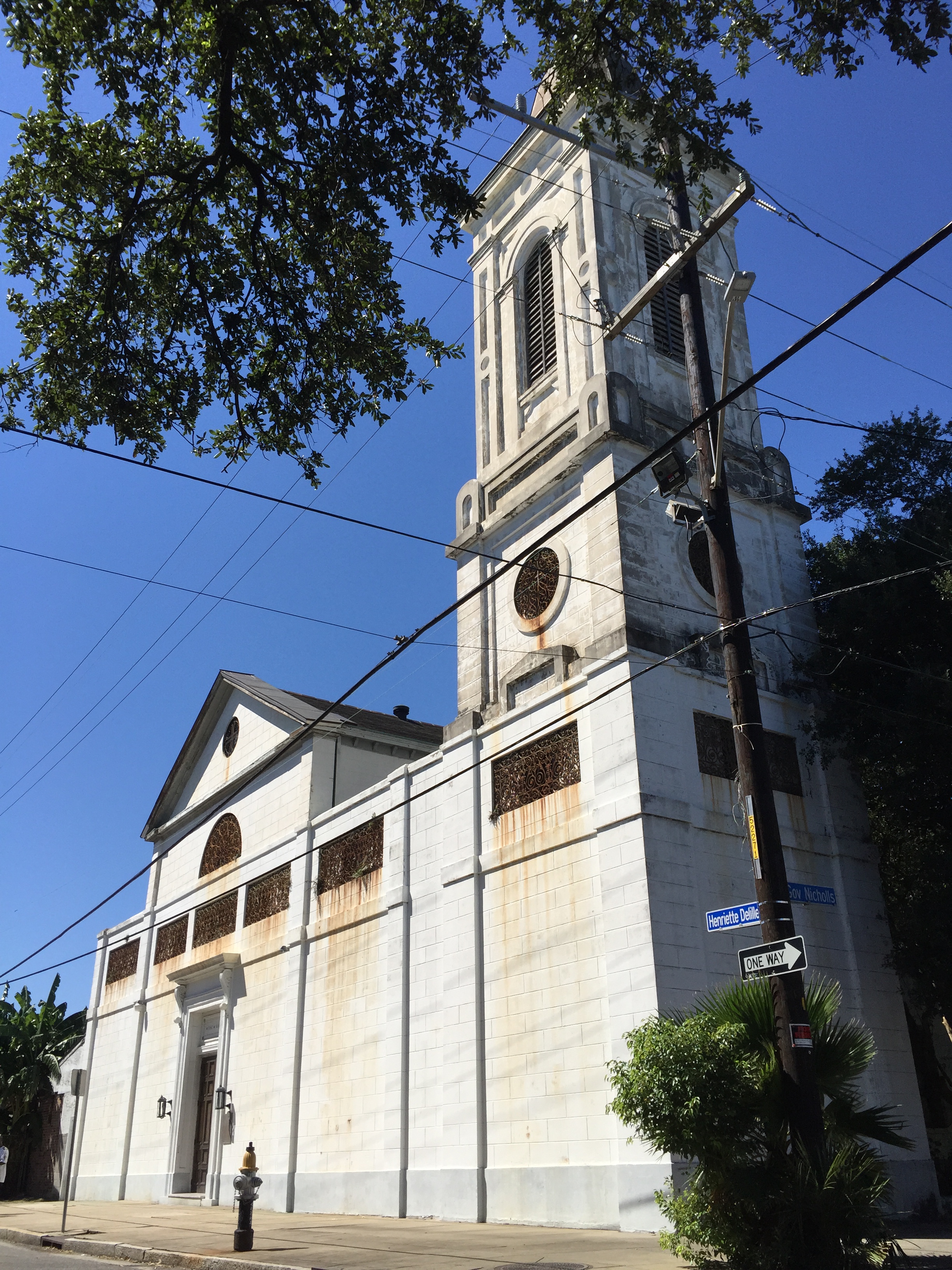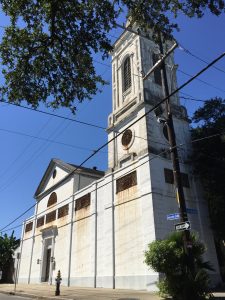
In 1787 in Philadelphia, the black church was born out of protest and revolutionary reaction to racism. Resenting being relegated to a segregated gallery at St. George’s Methodist Church, Methodist preachers Absalom Jones and Richard Allen, and other black members, left the church and formed the Free African Society. It was at first non-denominational and provided mutual aid to the free black community. Over time, Jones began to lead Episcopal services there. He led most of its members to create the African Church, in the Episcopal tradition.
In the fall of 1792, several black leaders attending services at St. George’s Methodist Church and had recently helped to expand the church. The black churchgoers were told to sit upstairs in the new gallery. When they mistakenly sat in an area not designated for blacks, they were forcibly removed from the seats they had helped build. According to Allen, “…we all went out of the church in one body, and they were no longer plagued by us”. While he and Jones led different denominations, they continued to work closely together and with the black community in Philadelphia…. It was accepted as a parish and on July 17, 1794 became the African Episcopal Church of St. Thomas. In 1804 Jones was the first black priest ordained in the Episcopal Church.
Richard Allen, a Methodist preacher, wanted to continue with the Methodist tradition. He built a congregation and founded the Bethel African Methodist Episcopal Church (AME). By July 29, 1794, they also had a building ready for their worship. The church adopted the slogan: “To Seek for Ourselves.” In recognition of his leadership and preaching, in 1799 Bishop Francis Asbury ordained Allen as a Methodist minister. Allen and the AME Church were active in antislavery campaigns, fought racism in the North, and promoted education, starting schools for black children.
St. Augustine Catholic Church of New Orleans was the first black church in Louisiana and the first black Catholic church in the United States. In the 1830s a group of free African-American New Orleanians began organizing to create a Catholic church in Tremé, a historically black and multicultural New Orleans neighborhood. With the blessing of Antoine Blanc (1792-1860), the first Archbishop of New Orleans, the parish was founded in 1841 and the first ceremony was held there on October 9, 1842.
A group of white Catholics, angered that a Catholic church aimed at black New Orleanians was to be built, began a campaign to purchase pews in an attempt to outnumber the black parishioners. This effort was unsuccessful, as free blacks still greatly outnumbered whites. Additionally, reputedly a first in American history, black members pooled resources to purchase pews for slaves.
St. Augustine Church has remained a central figure in the cultural and spiritual community of black New Orleans since its founding. In tandem with the Satchmo Festival in honor of Louisiana native Louis Armstrong (1901-1971), the church hosts Jazz Mass each year. Jazz Mass is a festival that draws from the rich musical tradition and wealth of jazz talent in New Orleans. Sidney Bechet, the great saxophonist and clarinetist, was baptized at St. Augustine and remained a parishioner. In addition to Bechet, Homer Plessy, the Creole civil rights activist who purposely violated Louisiana’s Separate Car Act and became the plaintiff in Plessy v. Ferguson, and civil rights lawyer A.P. Tureaud were both members.
In 2005 hurricane Katrina devastated the Archdiocese of New Orleans financially. Although St. Augustine was relatively undamaged, the parish’s numbers had been declining for some time. In order to save costs, in March 2006 Archbishop Alfred Hughes decided to close St. Augustine and merge its parish with St. Peter Claver in a neighboring African American area. This decision was met with resistance from St. Augustine’s parishioners and lay leaders. A group of community workers barricaded themselves in the church in an effort to force Archbishop Hughes to reverse his decision. The event attracted national and global press.
After a twenty-day standoff, Archbishop Hughes agreed to put St. Augustine on probation on condition that the parish would improve its finances, education, and attendance in eighteen months. The parishioners were successful in meeting these goals and acquired a $75,000 grant to help renovate the building. In March 2009 the Archdiocese took St. Augustine off probation. Today St. Augustine Catholic Church of New Orleans continues to hold church services and sponsor community cultural events.
-Information courtesy of Blackpast.org and Wikipedia- http://www.blackpast.org/aah/st-augustine-catholic-church-new-orleans-louisiana-1841#sthash.dSBVbDVP.dpuf

